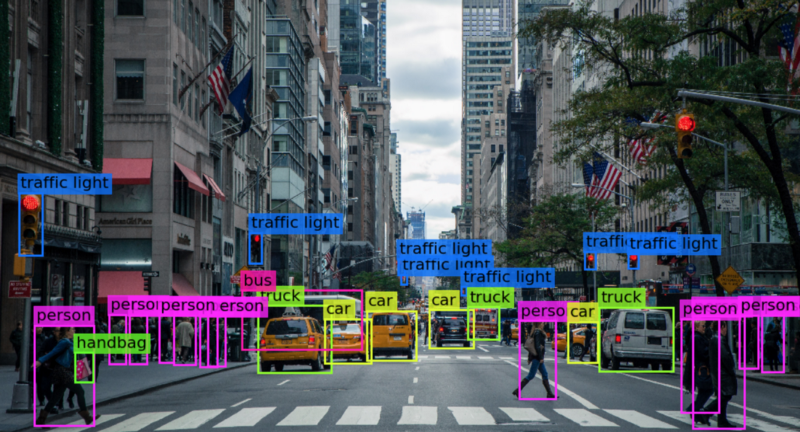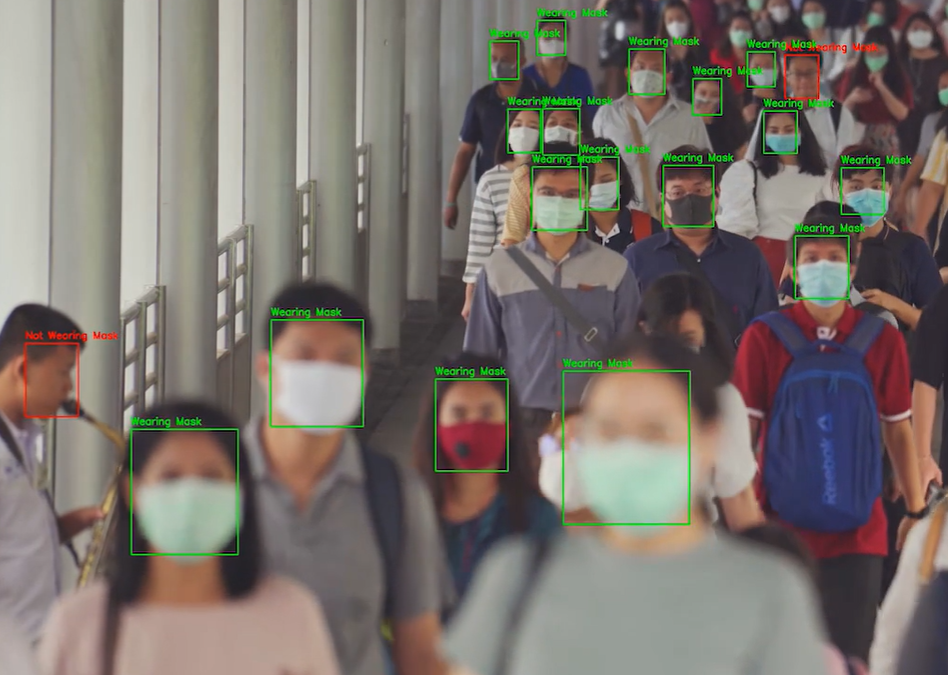All About Computer Vision !!!
What is Computer Vision?
Computer vision is the field of computer science that focuses on creating digital systems that can process, analyze, and make sense of visual data (images or videos) in the same way that humans do. The concept of computer vision is based on teaching computers to process an image at a pixel level and understand it. Technically, machines attempt to retrieve visual information, handle it, and interpret results through special software algorithms.
Computer vision (CV) is a process (and a branch of computer science) that involves capturing, processing and analyzing real-world images and video to allow machines to extract meaningful, contextual information from the physical world. Today, computer vision is the foundation and a key means of testing and exploiting deep-learning models that are propelling the evolution of artificial intelligence toward ubiquitous, useful and practical applications.
Computer vision (CV) is a process (and a branch of computer science) that involves capturing, processing and analyzing real-world images and video to allow machines to extract meaningful, contextual information from the physical world. Today, computer vision is the foundation and a key means of testing and exploiting deep-learning models that are propelling the evolution of artificial intelligence toward ubiquitous, useful and practical applications.
Here are a few common tasks that computer vision systems can be used for:
Object classification. The system parses visual content and classifies the object on a photo/video to the defined category. For example, the system can find a dog among all objects in the image.
Object identification. The system parses visual content and identifies a particular object on a photo/video. For example, the system can find a specific dog among the dogs in the image.
Object tracking. The system processes video finds the object (or objects) that match search criteria and track its movement.
How does computer vision work?
Computer vision technology tends to mimic the way the human brain works. But how does our brain solve visual object recognition? One of the popular hypothesis states that our brains rely on patterns to decode individual objects. This concept is used to create computer vision systems.
Computer vision algorithms that we use today are based on pattern recognition. We train computers on a massive amount of visual data—computers process images, label objects on them, and find patterns in those objects. For example, if we send a million images of flowers, the computer will analyze them, identify patterns that are similar to all flowers and, at the end of this process, will create a model “flower.” As a result, the computer will be able to accurately detect whether a particular image is a flower every time we send them pictures.
Computer vision technology tends to mimic the way the human brain works. But how does our brain solve visual object recognition? One of the popular hypothesis states that our brains rely on patterns to decode individual objects. This concept is used to create computer vision systems.
Computer vision algorithms that we use today are based on pattern recognition. We train computers on a massive amount of visual data—computers process images, label objects on them, and find patterns in those objects. For example, if we send a million images of flowers, the computer will analyze them, identify patterns that are similar to all flowers and, at the end of this process, will create a model “flower.” As a result, the computer will be able to accurately detect whether a particular image is a flower every time we send them pictures.
Computer vision works in three basics steps
Processing the image: Deep learning models automate much of this process, but the models are often trained by first being fed thousands of labeled or pre-identified images.
Understanding the image: The final step is the interpretative step, where an object is identified or classified.
Where we can apply computer vision technology
Some people think that computer vision is something from the distant future of design. Not true. Computer vision is already integrated into many areas of our life. Below are just a few notable examples of how we use this technology today:
Automatic inspection (image-based automated inspection), e.g., in manufacturing applications
Assisting humans in identification tasks (to identify object/species using their properties), e.g., a species identifying system.
Controlling processes (in a way of monitoring robots), e.g., an industrial robot
Detecting events, e.g., for visual surveillance or people counting
Modeling objects or environments (using drones can analyses about climatic factors that leads to change in vegetation, etc.), e.g., medical image analysis or topographical modeling
Navigation, e.g., by an autonomous vehicle or mobile robot.
Organizing information, e.g., for indexing databases of images and image sequences
Content organization
Computer vision systems already help us organize our content. Apple Photos is an excellent example. The app has access to our photo collections, and it automatically adds tags to photos and allows us to browse a more structured collection of photographs. What makes Apple Photos great is that the app creates a curated view of your best moments for you.
Assisting humans in identification tasks (to identify object/species using their properties), e.g., a species identifying system.
Controlling processes (in a way of monitoring robots), e.g., an industrial robot
Detecting events, e.g., for visual surveillance or people counting
Modeling objects or environments (using drones can analyses about climatic factors that leads to change in vegetation, etc.), e.g., medical image analysis or topographical modeling
Navigation, e.g., by an autonomous vehicle or mobile robot.
Organizing information, e.g., for indexing databases of images and image sequences
Content organization
Computer vision systems already help us organize our content. Apple Photos is an excellent example. The app has access to our photo collections, and it automatically adds tags to photos and allows us to browse a more structured collection of photographs. What makes Apple Photos great is that the app creates a curated view of your best moments for you.
Facial recognition
Facial recognition technology is used to match photos of people’s faces to their identities. This technology is integrated into major products that we use every day. For example, Facebook is using computer vision to identifying people in photos.
Facial recognition technology is used to match photos of people’s faces to their identities. This technology is integrated into major products that we use every day. For example, Facebook is using computer vision to identifying people in photos.
Facial recognition is a crucial technology for biometric authentication. Many mobile devices available on the market today allow users to unlock devices by showing their faces. A front face camera is used for facial recognition; mobile devices process this image and, based on analysis, can tell whether the person who is holding a device is authorized on this device. The beauty of this technology is that it works really fast.
Augmented reality
Computer vision is a core element of augmented reality apps. This technology helps AR apps to detect physical objects (both surfaces and individual objects within a given physical space) in real-time and use this information to place virtual objects within the physical environment.
Computer vision is a core element of augmented reality apps. This technology helps AR apps to detect physical objects (both surfaces and individual objects within a given physical space) in real-time and use this information to place virtual objects within the physical environment.
Self-driving cars
Computer vision enables cars to make sense of their surroundings. A smart vehicle has a few cameras that capture videos from different angles and send videos as an input signal to the computer vision software. The system processes the video in real-time and detects objects like road marking, objects near the car (such as pedestrians or other cars), traffic lights, etc. One of the most notable examples of applications of this technology is autopilot in Tesla cars.





Comments
Post a Comment